The article “Discover Ghadamgah: A millennia-old place of worship embedded beneath rock cliff” was published in the Tehran Times on June 28, 2020. The version printed below (notably the captions/descriptions under the images) has been edited from the original article in the Tehran Times.
Readers are also encouraged to consult the following articles:
- An Overview of the History of Mithraism
- Roger Beck: Mithraism
- Mithra: the “Pagan” Christ?
- Franz Cumont: The Mithraic Mysteries
- S. Acharya & D.M. Murdock: Is Mithra the “Pagan” Christ?
==================================================================================
The creation of rock architecture across the Iranian plateau is influenced by the religious, geographical, and political atmosphere of their time. Such structures are mostly formed by dominated empires of the time. Sometimes a place of worship has continued to be served in later periods but is has been changed in their functions. Experts say one of the reasons that have attracted man to mountain and rock cliffs in different schools was the religious traditions of the community.
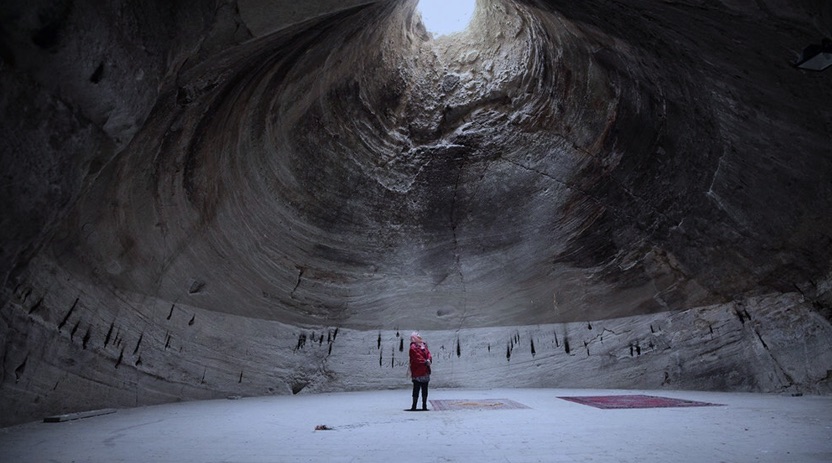
The interior of Ghadamgah (Photo: Khalil Gholami, Mizan in Tehran Times).
Ghadamgah, which is the main focus of this article, is a millennia-old subterranean temple that was repurposed to be a mosque. The temple is said to be a place of worship where ancient Mithraism rituals were observed before the advent of Islam.
The place of worship, which sometimes is referred to as a cave, is situated at the upstream of Ghadamgah’s graveyard, near Badamyar village, from environs of Azarshahr in the northwestern West Azarbaijan province. It is located some 200 meters from a historical cemetery of the same name.
Apart from being called a temple, mosque, or a cave, the dwelling is of high importance in terms of architecture as well as cultural and anthropological values. It was recorded in a list of country’s natural cultural heritage with register number 779 in the Iranian calendar year 1347 (1968).
Currently named Azarshahr Mosque, by many locals, the structure is a travel destination as well, attracting thousands of visitors to the region per annum.
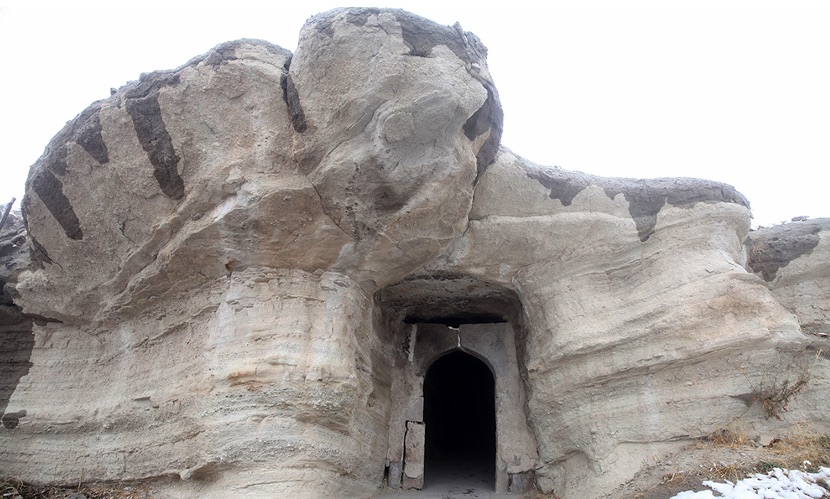
Ingress onto the Ghadamgah Temple (Photo: Khalil Gholami, Mizan in Tehran Times).
According to the sanctity of mountains and rocks in the ancient religions, especially in Mithraism, valuable temples and places of worship have emerged in the mountains. Their obvious characteristic is circular dome-shaped spaces; simplicity, the arrangement of spaces, and the way of creating light that corresponds with the tradition of Mithraism in Iran.
Mehr Temple in Maragheh, Dashkasan in Zanjan, and Ghadamgah Temple in Azarshahr are the rock temples in the northwest of Iran that signs and symbols on them indicate the performance of Mithraism duties in these temples.
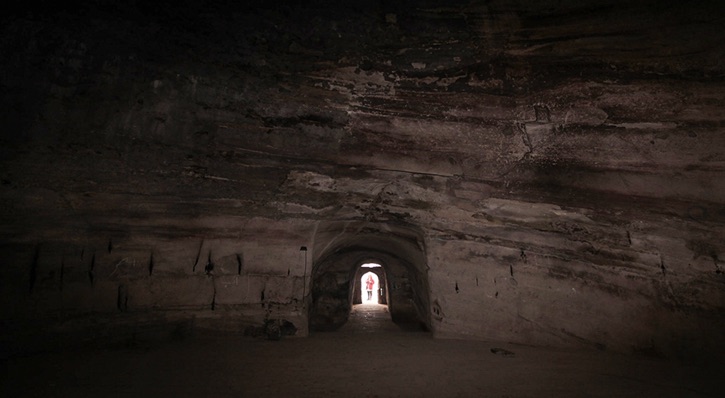
Arched vault-like passageway at Ghadamgah (Photo: Khalil Gholami, Mizan in Tehran Times).
The outside perspective of the Ghadamgah temple is very modest and at the first glance may not even attract the attention of passersby. This perspective is a small opening beneath a rock shelter.
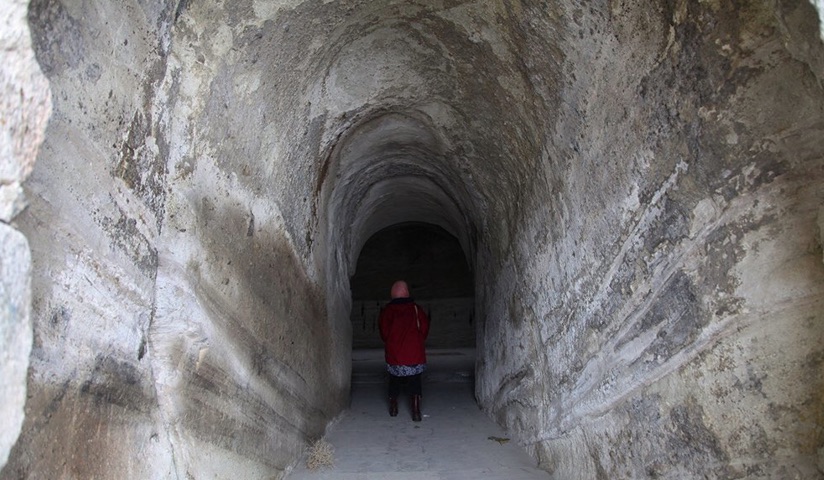
Sloped access by way of a vault at Ghadamgah (Photo: Khalil Gholami, Mizan in Tehran Times).
The main area of Ghadamgah is one of the coolest and most attractive spaces that can be thought about in an ancient edifice. This space that totally is drilled in the cave is a cone with a base diameter of 15 to 15.70 meters. Cone height is 12.30 meters and the diameter of light well is 105 cm. The walls have been cut on a regular basis from the bottom to top of the cone.
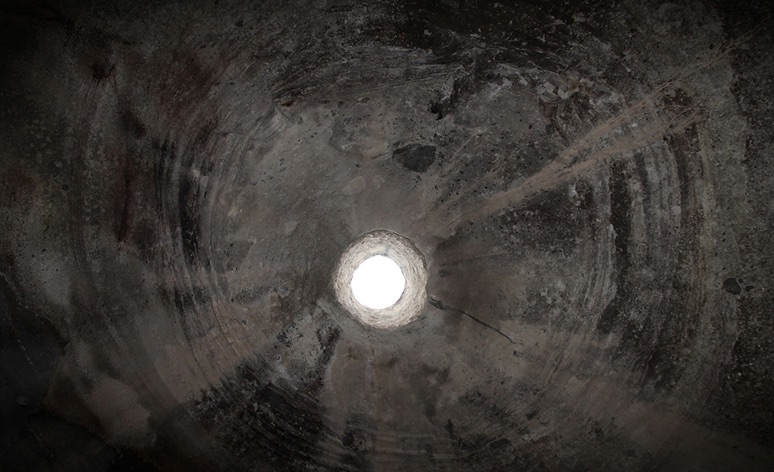
Open zenith of roof at Ghadamgah (Photo: Khalil Gholami, Mizan in Tehran Times). Mithraic temples often featured openings atop the cieling area to allow for sunlight to enter: a symbol of the light of Mithra (Iranian: Mehr; Armenian: Meher). European Mithraic temples featuring this Iranian type of roof opening include the Mithraeum located under Rome’s Basilica of San Clemente as well as the Mithraic temple in Ostia, Italy.
The main area of the Qadamgah Temple is one of the coolest and most attractive spaces that can be thought about an ancient edifice. This space that totally is drilled in the cave is a cone with a base diameter of 15 to 15.70 meter. Cone height is 12.30 meters and diameter of light well is 105 cm. The walls have been cut on a regular basis from the bottom to top of the cone.



